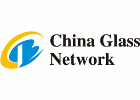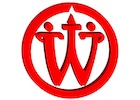Lively exchange, numerous exciting conversations, valuable customer feedback – the RATH booth at glasstec 2022 in Düsseldorf was a hive of activity for four days. The new, advanced and exclusively produced feeder expendable series, which RATH presented for the first time, also generated a great deal of interest. Presenting this new product series also proved once again that the internationally active Austrian refractories manufacturer attaches high importance to research and development. There was also exciting news to tell from RATH’s production facility for hot gas filter elements in Germany: A second production line is under construction and due to be commissioned in the next few months.
With more than 130 years of experience, RATH is regarded as a competence leader in the refractory sector. Its customers benefit from the widest range of products and service available on the market, coupled with extensive, industry-specific expertise – which also applies to the glass industry: The specialists at RATH have the required in-depth industry knowledge and understanding of the specifics of glass processing. RATH´s precision-crafted refractory products are designed for a wide range of applications, including container glass, float glass, C-glass, E-glass, and tableware. Including the original Emhart Glass designed feeder systems, RATH offers the complete range of highest quality refractory materials for the entire glass manufacturing process. Only highest quality raw materials are used for all of RATH`s refractories, designed to achieve predictable density and resistance to erosion and corrosion.
New, optimized feeder expendable series after an intensive 5-year development process
The further development of refractory compositions is a challenge that RATH is taking on with great commitment. “After an intensive 5-year research and development process, the new FOURATH 4xx feeder expendable series was ready for introduction at glasstec”, says Robert Nusszer, Managing Director of the Sales Unit Glass at RATH. “This new product line is based on an optimized formulation which has been exclusively developed and produced by RATH.” The product has been put through its paces in the RATH laboratories and has successfully passed the first glass factory trials in the last 1.5 to 2 years.
From improved crack and thermal shock resistance to longer service life
While the previous 3xx mixes (like 333, 315, 301, 338, 345, etc.) were produced using the slipcasting technique, the new FOURATH 4xx mixes are produced using a so-called hybrid technology: RATH uses the same mold park, but a special vibrocasting technology.
“This brings some significant advantages: For example, the new feeder expendable series convinces with improved product quality – due to a more compact mix and better surface quality”, says Robert Nusszer. “We selected the highest quality raw materials in order to keep the impurity level to a minimum. Furthermore, with the new manufacturing technology we can avoid the additional grinding, e. g. of the tube´s outer surface”. Thus, RATH can significantly increase the service life.
“The thermal shock resistance has also significantly improved and the risk of cracking is lower than ever”, Nusszer adds. “Our customers can switch to the new product series immediately: The same part numbers are used as before, only the last three digits will change.”
Products shown at glasstec: 420 and 473 for applications in soda lime glass, 457 and 458 fused silica refractory mixes for diverse applications
At glasstec the following products have been shown: the already well tested and released 420 (a complementary mix of 333, 315) – tubes, plungers, orifice rings and stirrers as well as the new 473 zirconia inserted spouts; for the latter, RATH is still looking for candidates for operational testing in glass factories. The new fused silica mixes, the drain-cast 457 and the slip-cast 458 was also introduced at glasstec. These mixes are used in the highest quality glass production, e. g. in melting crucibles, and the 458 is also available, for example, for crown repair of glass melting tanks, as well as suspension brick in the doghouse.
RATH production site for hot gas filter elements in Meißen: Second production line to be commissioned in the next few months
As a company with extensive experience in refractory technology, it’s only logical that RATH also specializes in hot gas filtration. For many years, the company has been developing innovative ceramic hot gas filter elements that make it possible to filter particle-laden industrial flue gases at temperatures up to 1000 °C and reduce emissions of nitrogen oxides. Since 2016, all RATH resources, capabilities and expertise in hot gas filtration have been pooled in Meißen, Germany. This research and production site of the company is home to cutting-edge facilities for the manufacture of RATH`s FILTRATH® non-catalytic and FILTRATH®CAT catalytic filter elements. The latter were developed for pollutant emission control: These rigid yet highly porous and catalytically coated ceramic filter elements are used for multiple pollutant control of (fine) dust, acid gases, dioxins and nitrogen oxides in hot gas flows (at temperatures between 250 ° and 420 °C) and can easily replace conventional textile filters.
A second production line is currently under construction at the Meißen plant and is scheduled for completion and commissioning in 2022. The filtration business line is one of the business lines that has seen a significant growth within the RATH Group. “It has great potential since the glass industry has to drastically reduce its footprint on environmental pollution and the greenhouse effect worldwide. RATH is committed to advancing environmental protection and helping its customers in the glass industry achieve their ambitious environmental goals. Thus, RATH continuously develops and invest in this technology”, Robert Nusszer summarizes.
Find more information here:
























